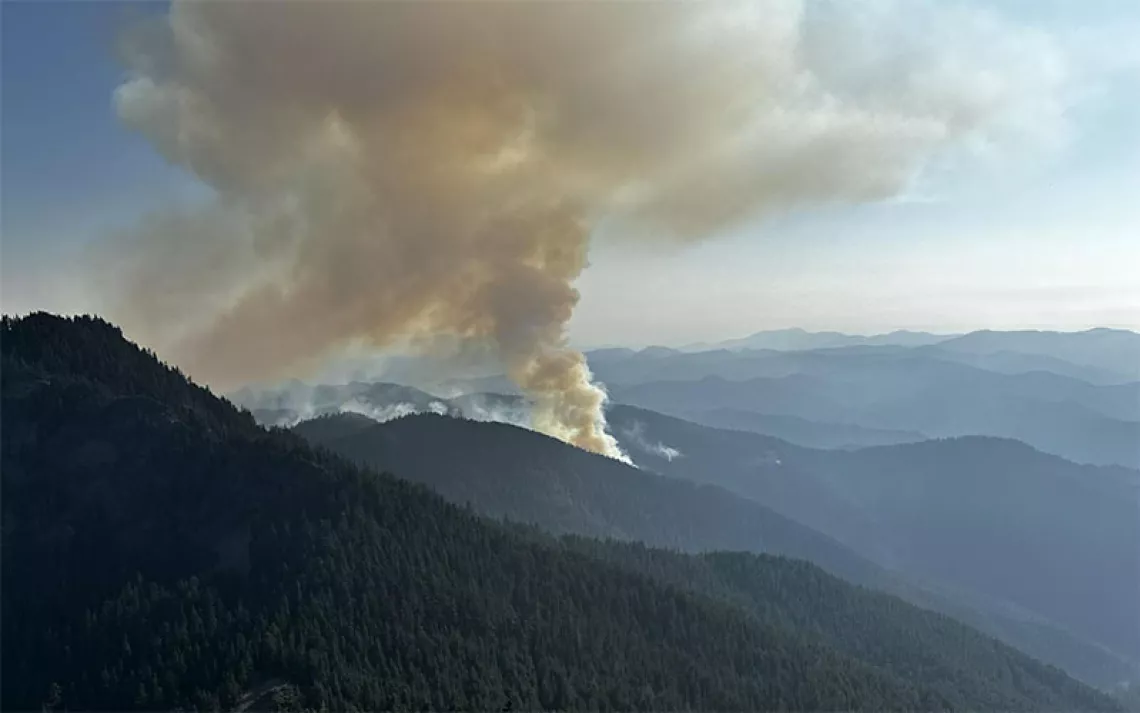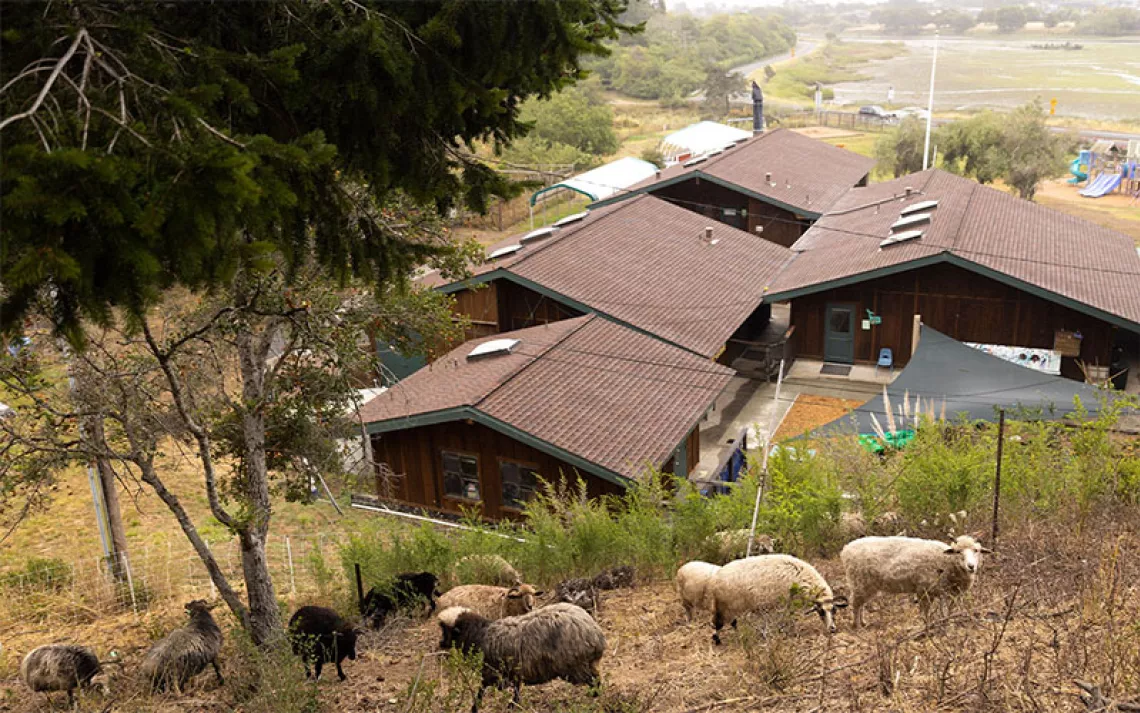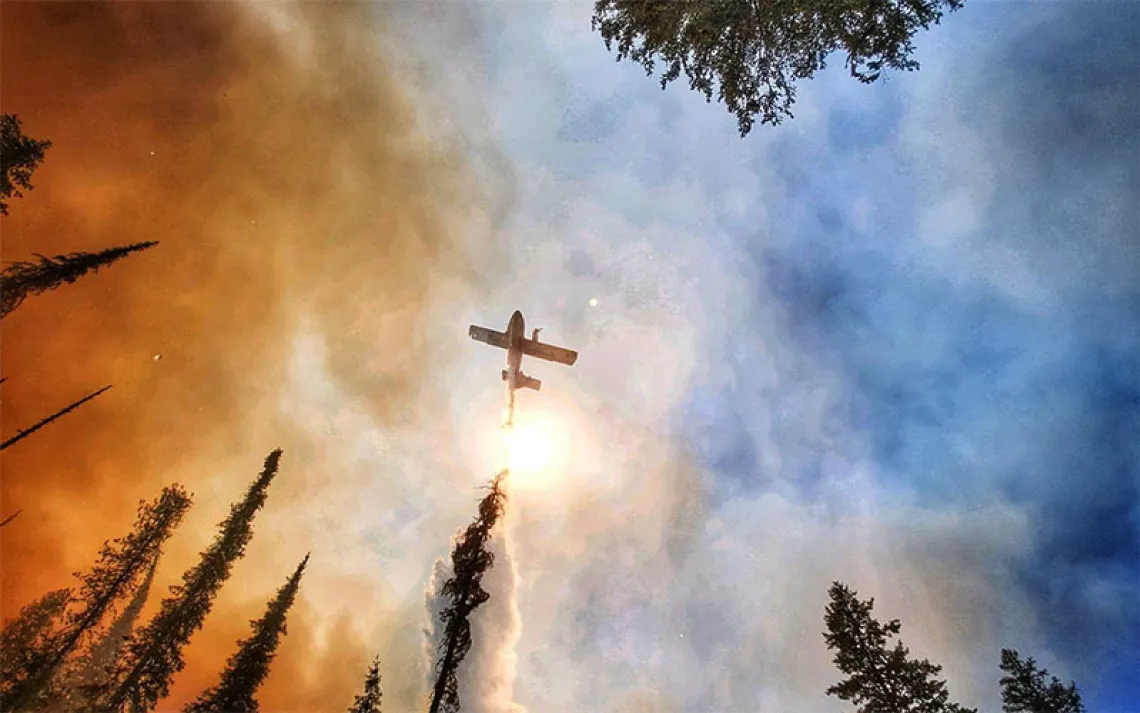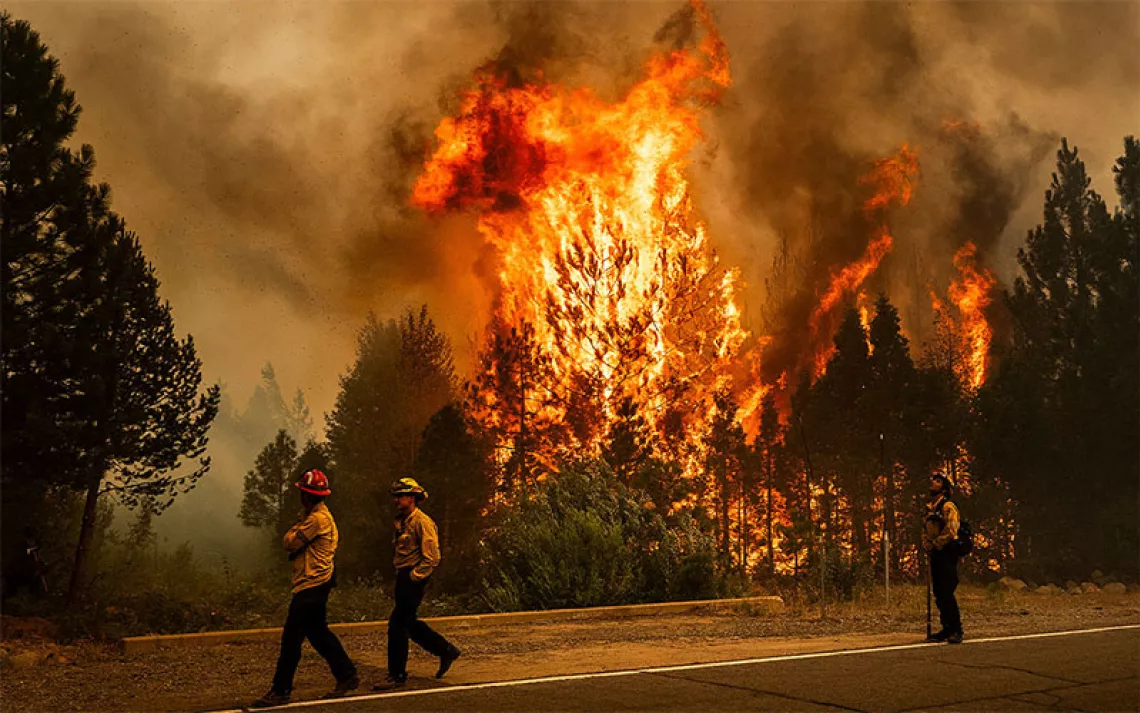What Happens After a Wildfire Sweeps Through a Forest?
Regeneration of burned forests depends on how landscapes respond to rapid climate change
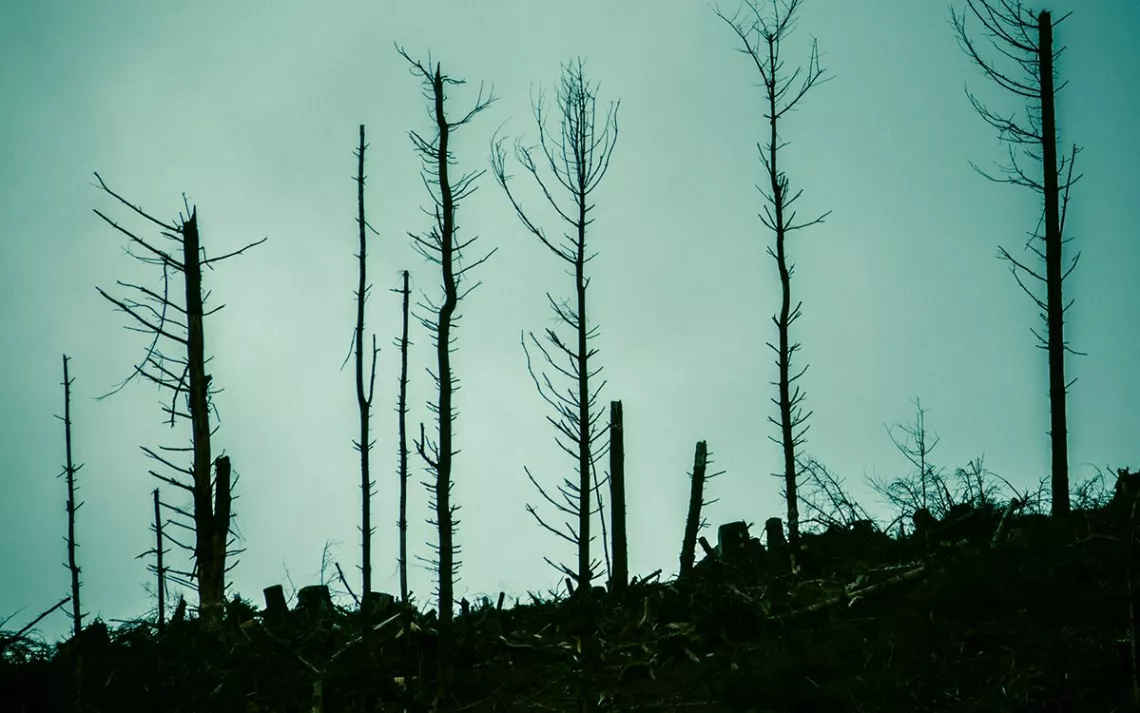
Photo by mrdoomits/Istock
This summer, wildfires in California have burned more than 800,000 acres of forest and shrubland. The biggest burn, a combination of fires known as the Mendocino Complex, is now the largest in the state’s history. As firefighters move into "fire suppression repair" mode—preparing loose soil for a wet winter and trying to prevent mudslides—the question is, how well will scorched lands repair themselves in the years ahead? The answer, according to ecologists, depends on an ecosystem’s ability to adapt to rapid climate change, especially temperature increase. Even then, once-familiar landscapes may not return to exactly how they looked before.
Post-fire forest regeneration is not the same as forest recovery. One way to think of post-fire recovery is that it involves the return of same-mix species of trees, shrubs, and grasses. For example, recovery of the forests burned by the recent Ferguson fire outside Yosemite National Park would see a new generation of Douglas fir and ponderosa pine seedlings replacing the dead trees. But a landscape can regenerate without necessarily returning to its previous mix of trees. Oaks might replace pines, or drought-tolerant shrubland might take the place of the moisture-loving trees. Which kind of plant community recolonizes the burned forests depends on a region’s climate in the months and years after the fire, since higher temperatures and decreased precipitation can compromise a forest’s chances of full recovery.
In short: Climate change will play a major role in whether the trees we have long associated with a given forest will return to that landscape after a wildfire.
That was the conclusion of a study published earlier this year in Ecology Letters examining forest recovery. Study coauthor Dr. Camille Stevens-Rumann, a professor at Colorado State University and a former firefighter, studied nearly 1,500 wildfire sites that burned between 1988 and 2011. Her team found that before 2000, 70 percent of the burned forests returned to their previous tree mix. After 2000, that number fell to 46 percent. Even more troubling, a third of the forests studied simply didn’t regrow trees at all. The dominant trend, the researchers found, was hotter and drier climates after 2000. “That was the real indicator that this was a pattern we should look at,” Stevens-Rumann says. “You see that, in some years, the average temperature would be up and down” but generally maintaining a steady average. “After 2000, there was just one year that was below the 30-year average temperature. It was hotter and drier almost every year after 2000.” The study tracked several types of forests from Colorado to the Canadian border, including mixed conifer, lodgepole pine, and ponderosa pine. The trend of declining tree return during drought years applied to all of those forest types.
Drought prevents post-fire restoration by putting stress on fragile, new growth. Forests and many kinds of trees need a humid, relatively moist climate to grow after fire seasons. When a region is locked in drought, the soil remains dry and brittle, preventing seedlings from taking root in the newly exposed soil. Scott Stephens, a professor of fire science at the University of California, Berkeley, has traced the ecology of fire-prone regions in the western United States and observed how modern droughts can compromise ecosystems that used to be more resilient. “As you go into the drought period,” he said, “the first few years [are] the most vulnerable time for the root set of new trees. With regeneration in the early phases, you need some late-season rain. But hot temperatures put more evaporative stress on the seedlings that are trying to photosynthesize.” In California, the years 2012, 2013, and 2014 were the driest three-year period on record.
A troubling consequence of failed forest regrowth is its potential to fuel a negative feedback loop of accelerating climate change. Trees are natural carbon sequesters, since they absorb carbon from the atmosphere during photosynthesis and store it as they produce nutrients. When young trees fail to grow during prolonged drought, that means less carbon is stored by forests, contributing to global warming. And the fires themselves are also a significant source of greenhouse gas emissions; the 2017 California fires may have pumped out enough CO2 to negate a year’s worth of policy action on climate change. “Areas with low tree density could maintain droughts for some time because of the cyclical effect of carbon sequestration and repeated fires,” Stephens said. “If you look statewide [in California], we’re starting to see treeless patches with worsening climates.” Shrubland regions can also sequester carbon, but the amount “would be 10 percent as much—a smaller number than a forest can do.”
Some fire ecologists caution that climate change specifically, not the wildfires per se, prevents forest recovery; conflating the two can misinterpret the value of wildland fires in maintaining ecological balance. “We need to have separate conversations on wildland fires and climate change,” says Chad Hanson, director of The John Muir Project at the Earth Island Institute and a Sierra Club board member. Droughts and rising temperatures, Hanson says, “can cause lower elevation forests to shift north, and cause forest types to change in ways that will be hard for wildlife and ecosystems to adjust to. That’s totally different than saying fire is at fault. If anything, fire is rejuvenating forests to be more climate resilient.”
This is a crucial difference in dry regions of the western United States, where forests and wildlife have adapted to recover after a season of wildfires and wet post-fire climate conditions. During wildfires, the nutrients from dead trees are returned to the soil. The forest floor is exposed to more sunlight, allowing seedlings released by the fire to sprout and grow. Many trees have evolved fire-resistant bark, like ponderosa pine or eucalyptus; others, like the giant sequoia or lodgepole pine in Yellowstone National Park, require fire to open their waxy cones and release seeds, in a process known as serotiny. Fire also acts as a natural disinfectant, incinerating diseased plants and removing them from the flora population.
After fires, the charred remnants of burned trees provide habitats for insects and small wildlife, like the black-backed woodpecker and the threatened spotted owl, which make their homes in dry, hollow bark. In a moist post-fire climate, native plants like manzanita, chamise, and scrub oak will thrive. Sometimes, post-wildfire landscapes will explode into thousands of flowers, in the striking phenomenon known as a superbloom. “One of the beautiful things about California fires is spending time in those areas as soon as you start getting rains,” Dr. Stevens-Rumann says. “There’s an abundance of beautiful flowers and vegetation that you only see after fire years.” Such was the case last spring, when a dramatic display of wildflowers such as star lilies and the aptly named “fire follower” (or whispering bell) bloomed over the site of the 2017 Wine Country fires in Northern California.
Forest recovery becomes much harder when climate change stresses the biome. “There’s a question of whether climate will happen too quickly for the rate of tree growth,” Stevens-Rumann says. “We’re probably surpassing the point where regeneration is going to happen for those forests that have already burned too much at this point.” The future landscape will likely look something like this: extensive low-lying regions of shrubland, empty of trees, with coniferous forests moving farther north and upward in elevation. “You’re going to get higher densities of tree regeneration at higher elevation, where they’re getting less heat-stressed and have more moisture availability,” she says.
This new normal may sound like a drastic change, but it doesn’t have to be inevitable if local and federal governments adopt bold climate change mitigation policies. “I hear ‘new normal’ like we’re not going to have any influence, like it’ll just be part of our world,” says Scott Stephens at UC Berkeley. “But there are things we can do to help a forest live in the future. We need to do more prescribed fires and manage wildfire in remote areas to create lower-density patchiness, which enables a forest to be more resilient. Trying to restore a forest after a major fire is much more difficult.”
 The Magazine of The Sierra Club
The Magazine of The Sierra Club
